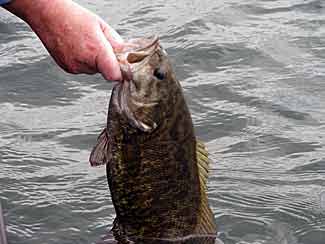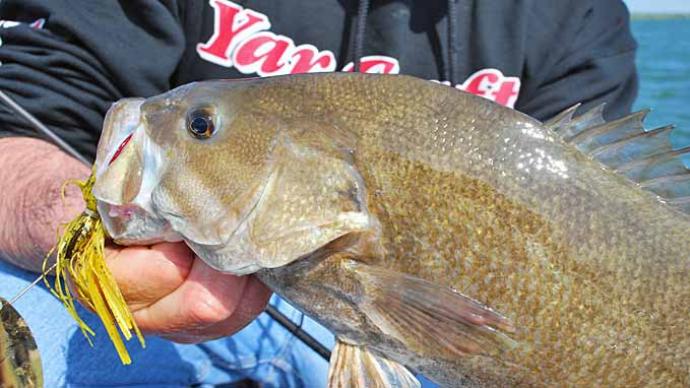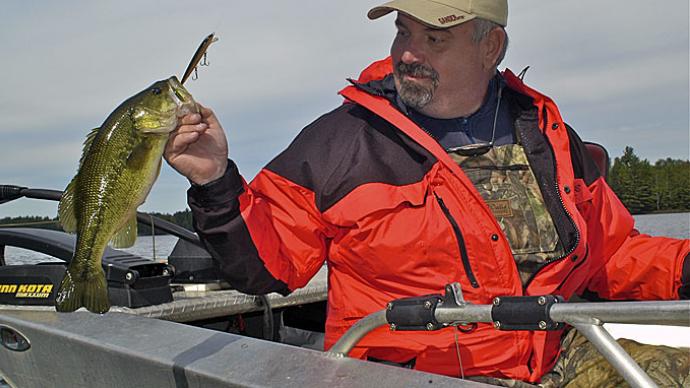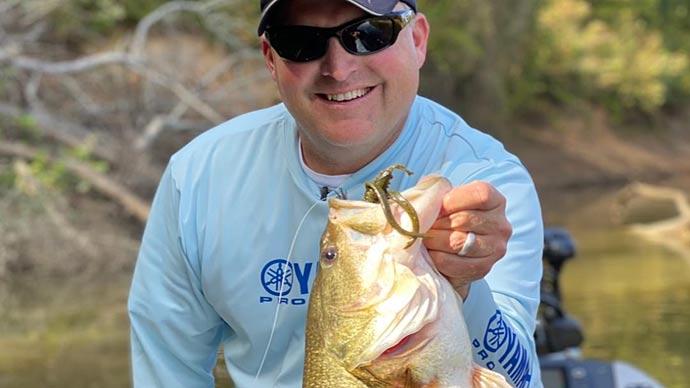
For expediency and research sake, Lake Erie, the smallest of the Great Lakes, has always been divided into three sections: western, central, and eastern basins. It would seem as though government officials and anglers recognize this fact; the fish do as well. Each basin holds the main fish species, not 'readily found' in connecting basins. For example, I believe it has long been recognized that walleye and smallmouth bass make up the majority of gamefish in the western basin. At the same time, trout or steelhead set up shop in the central basin, and a not-so-great mixture of all inhabit the eastern end of Lake Erie.
The western basin of Lake Erie plays host to the largest numbers of walleye and smallmouth bass in the lake. Many thousands of local and international trophy-seeking anglers ply these waters. They come armed to the gunnels with rods, reels, and tackle set to battle with 10- and 12-pound walleye or 5- and 6-pound smallmouth. These fish come in these weights. They constantly get reeled in throughout the seasons.
Up to 95% of the water's flow enters from the Detroit River and the upper Great Lakes. It is also the shallowest of the Great Lakes and vulnerable to fluctuating water levels. Being 388 km long and 92 km wide, with an average depth of 19 m, Lake Erie is still a body of water that commands your respect and punishes man and machine for not heeding its warnings of when to get off. Though most of the winds enter the western basin from the west, anglers know that when the wind switches to the south, the waves can reach 2 and 3 m in an awful hurry, and it's best that you already be within sight of the shoreline for that quick getaway.
As unpredictable as the weather in the western basin may be, it is more predictable when fishing for football-sized smallies. Humps and rock piles located off Leamington and Colchester hold colossal smallmouth bass in great abundance. These smallies differ from their relatives in nearby Lake St. Clair. The 'camo patterns' of the fish vary due to the structure they live and ambush prey from. Western basin smallies come in a mottled pattern that enables them to hide among the rock piles, while Lake St. Clair smallmouth is usually more of a barred pattern that serves them well when lying in wait among the many weed beds found in the lake. In addition, the smallmouth bass caught in Lake Erie's western basin is, on average, at least a half-pound heavier than their St. Clair cousins.
Preferred Baits
Perhaps, the local anglers fishing live to bait for their world-famous walleye, so the preferred bait is 'live' crayfish and shiners. The soft-shelled crayfish is by far the more popular of the two baits, and the adage, "the larger the bait, the larger the bass" may be founded in Lake Erie's western basin, at least from my experience.
When using artificial baits on resident smallies, the preferred baits are tubes, like Mizmo's Big Boy (salted\blended) or Mr. Twister's Exude (scented). A close second favorite bait is the crankbait. While most of the water you fish in the 'basin' may be 12- to 18-feet deep, it's best to use a 'crank' that will get you down at least close to the bottom or, better yet, past it and bang it off the rocks and stir up the bottom.
One charter boat operator locally employs the services of a large chunk of chain to drag along the bottom. The chain not only stirs up the bottom, thereby uncovering hidden bugs and crayfish that eventually lay a 'chum line' for the bass to follow. It also calls them in by making clanging noises that chains do (bass are naturally curious and investigate noises). This is called "ringing the dinner bell" to those of us who are aware of the practice and have put it to use.
Preferred Presentation
There is no secret here. Smallmouth bass tends to roam their home ranges, and the anglers follow. The old drift and drag is a preferred presentation here and on Lake St. Clair. However, many local anglers will drop anchor when a good school of bass and baitfish are found. They will fish that school, perhaps all day, only moving when the forage leaves the area. Still, some anglers like to troll for their bass, intercepting them as they roam from feeding to feeding within their range. When trolling, these anglers will use bottom bouncers with worms or minnows, or they'll run mid-depth running crankbaits.
Though it may be sporting to use light line and action rods that smallie fishermen are famous for, the wiser angler knows that his once-in-a-lifetime trophy may be the next to take his offering and will spool up with 10-pound test or heavier clear premium line like Seaguar InvizX.
So if you have the time, two or three days is preferred due to weather and wind instability; take the trip to Lake Erie's western basin out of Leamington or Colchester for that smallmouth trophy of a lifetime . . . but please, take the measurements and the photo and put the trophy back for another trip.
Fish on!



